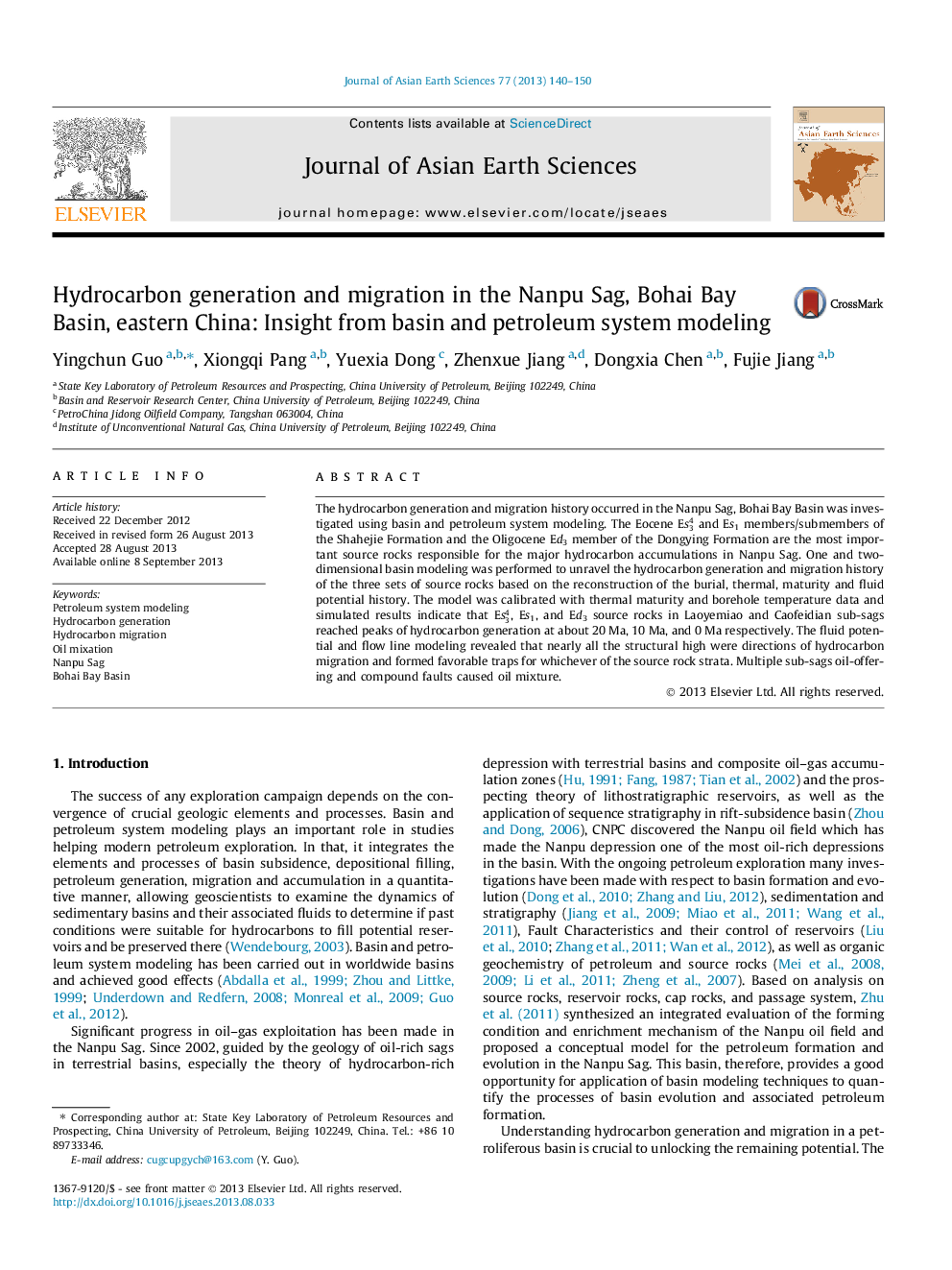| Article ID | Journal | Published Year | Pages | File Type |
|---|---|---|---|---|
| 6444557 | Journal of Asian Earth Sciences | 2013 | 11 Pages |
Abstract
The hydrocarbon generation and migration history occurred in the Nanpu Sag, Bohai Bay Basin was investigated using basin and petroleum system modeling. The Eocene Es34 and Es1 members/submembers of the Shahejie Formation and the Oligocene Ed3 member of the Dongying Formation are the most important source rocks responsible for the major hydrocarbon accumulations in Nanpu Sag. One and two-dimensional basin modeling was performed to unravel the hydrocarbon generation and migration history of the three sets of source rocks based on the reconstruction of the burial, thermal, maturity and fluid potential history. The model was calibrated with thermal maturity and borehole temperature data and simulated results indicate that Es34, Es1, and Ed3 source rocks in Laoyemiao and Caofeidian sub-sags reached peaks of hydrocarbon generation at about 20Â Ma, 10Â Ma, and 0Â Ma respectively. The fluid potential and flow line modeling revealed that nearly all the structural high were directions of hydrocarbon migration and formed favorable traps for whichever of the source rock strata. Multiple sub-sags oil-offering and compound faults caused oil mixture.
Keywords
Related Topics
Physical Sciences and Engineering
Earth and Planetary Sciences
Geology
Authors
Yingchun Guo, Xiongqi Pang, Yuexia Dong, Zhenxue Jiang, Dongxia Chen, Fujie Jiang,
